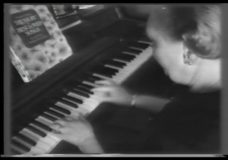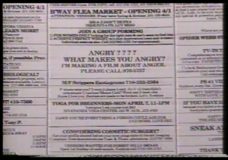[Paper Roses raw: Otto and Margaret Falkenberg #2]
In 1975, the Chicago video collective Videopolis produced a documentary called “It’s a Living.” The tape was loosely based on Studs Terkel’s book, “Working,” which was a collection of interviews with ordinary people talking about their jobs. This hour-long program was shown on Channel 11 (WTTW) in Chicago. After the success of this tape, the videomakers were commissioned to make six half-hour shows that had the same type of mission. “Paper Roses” featured residents of the Chicago Housing Authority’s Clark-Irving Apartments, which provided low-rent housing for senior citizens. This tape is a continuation of footage of Margaret and Otto Falkenberg performing several musical numbers and talking about aging.

![[Paper Roses raw: Otto and Margaret Falkenberg #2]](https://mediaburn.org/wp-content/uploads/2018/02/653909384_640-228x160.jpg)
![[Paper Roses raw: Otto and Margaret Falkenberg #1]](https://mediaburn.org/wp-content/uploads/2018/02/653909365_640-228x160.jpg)
![[Paper Roses raw: Walter and Peggy Wolberg]](https://mediaburn.org/wp-content/uploads/2018/02/653909356_640-228x160.jpg)
![[Paper Roses raw: first day]](https://mediaburn.org/wp-content/uploads/2018/02/653909324_640-228x160.jpg)
![[The 90’s raw: William Gibson]](https://mediaburn.org/wp-content/uploads/2018/02/635109927_640-228x160.jpg)
![[The 90’s raw: interview with Russian woman]](https://mediaburn.org/wp-content/uploads/2018/02/635050096_640-228x160.jpg)

